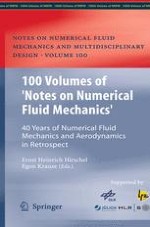2009 | Buch
100 Volumes of ‘Notes on Numerical Fluid Mechanics’
40 Years of Numerical Fluid Mechanics and Aerodynamics in Retrospect
herausgegeben von: Ernst Heinrich Hirschel, Egon Krause
Verlag: Springer Berlin Heidelberg
Buchreihe : Notes on Numerical Fluid Mechanics and Multidisciplinary Design
